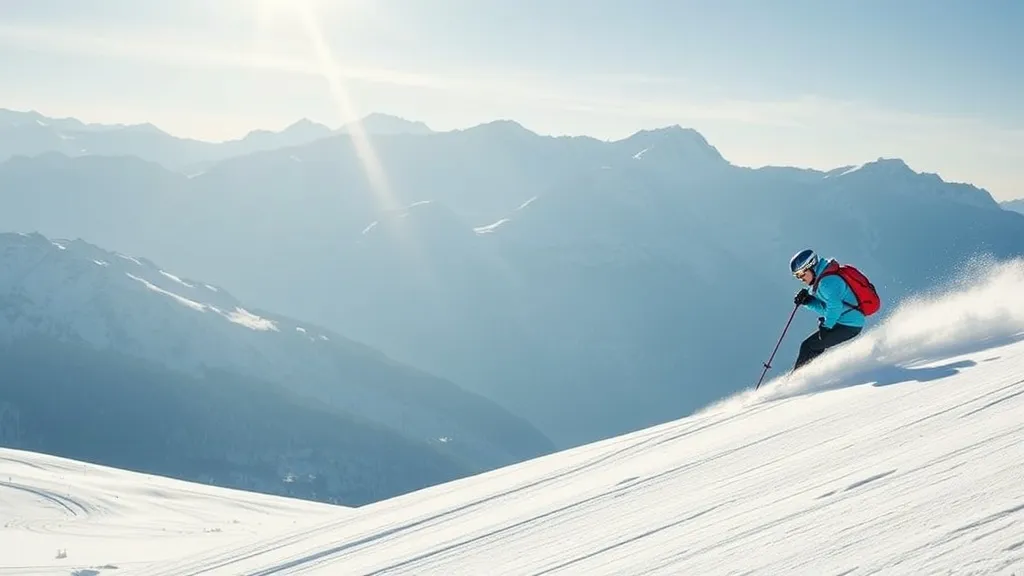Ski Travel Insurance: 2025 Winter Sports Cover
You’ve spent months dreaming of fresh powder, perfect turns, and après-ski vibes on snowy peaks. As winter approaches, the last thing you want is an unexpected bill or invalidated policy messing up your holiday. Interestingly enough, 80.8% of U.S. single-trip ski policies now include medical coverage, up from 73.5% last year (Emergency Assistance Plus). Here’s the thing: ski travel insurance is your best line of defense against adventure dips—those sudden injuries, lost gear, or last-minute cancellations. In this guide, you’ll discover how ski travel insurance works, why it matters for your 2025 ski trip, how to choose the right plan—whether single-trip or annual—and expert tips for maximizing your winter sports cover. By the end, you’ll know exactly what to look for and how to compare policies without confusion. Just imagine gliding down the slopes knowing you’re fully protected. Ready to carve with confidence? Simple.
Table of Contents
- Why Ski Travel Insurance Is Essential for Your 2025 Adventure
- Understanding Coverage Options: Finding the Right Ski Trip Insurance Coverage
- How Ski Travel Insurance Works: The Claims Process and Policy Details
- Choosing Between Single-Trip and Annual Ski Travel Insurance Plans
- Advanced Tips for Maximizing Your Winter Sports Cover
- FAQ
- Conclusion
Why Ski Travel Insurance Is Essential for Your 2025 Adventure
Imagine standing at the top of a black diamond run when suddenly a storm rolls in. You might be wondering: what happens if you break a ski or need emergency medical evacuation? That’s where ski travel insurance comes in.
Without proper coverage, you could face thousands of dollars in medical bills, trip cancellation fees, or equipment replacement costs. Medical evacuations alone often exceed $20,000 for remote mountain rescues. Adding to that, ski gear isn’t cheap—replacing lost or damaged skis can set you back over $800 per pair. Clearly, this matters.
Take Sarah, a weekend skier who slipped on an icy patch and broke her wrist. Her policy covered the ambulance, five nights in a Swiss hospital, and even reimbursed her for unused lift tickets. No more sleepless nights worrying about huge bills.
“The ski insurance market’s robust growth is fueled by increasing winter sports participation and a growing awareness of skiing risks, with annual multi-trip policies gaining traction among frequent skiers.” – Market Analyst, DataInsightsMarket
Takeaway: Always include ski travel insurance in your booking. It’s not optional—it’s peace of mind.
Understanding Coverage Options: Finding the Right Ski Trip Insurance Coverage
Not all policies are created equal. You need more than just basic travel insurance if you’re hitting the slopes.
Coverage typically includes:
- Emergency medical and evacuation expenses
- Trip cancellation or interruption
- Lost, stolen, or damaged equipment
- Off-piste and avalanche cover (optional add-on)
- Reusable gear hire and delayed baggage
Consider this scenario: two friends, Alex and Jamie, buy different policies. Alex’s plan omits equipment coverage, while Jamie opts in. When Alex’s skis are stolen, he pays out of pocket. Jamie files a successful claim and gets reimbursed within days. Ouch.
“Digital claims processing reduces turnaround time and boosts customer satisfaction—some insurers now settle equipment claims in as little as 48 hours.” – Battleface
Takeaway: Match coverage options to your ski style and gear value. Scrimping on equipment cover can cost a fortune.
How Ski Travel Insurance Works: The Claims Process and Policy Details
Filing a claim shouldn’t be more stressful than sub-zero temps. Understanding the process keeps you calm and prepared.
Here’s how it generally works:
- Report the incident to local authorities or resort management (for accidents or theft).
- Contact your insurer’s emergency assistance line immediately.
- Gather documentation: medical reports, police statements, receipts.
- Submit a claim online or via the insurer’s app.
- Receive approval and reimbursement—often within 7–14 days.
Case in point: when Tom’s baggage was delayed en route to the Alps, he filed a digital claim with photos of missing gear and receipts for emergency purchases. His insurer covered the cost of rental skis plus toiletries, turning a frustrating delay into a minor hiccup.
“Advancements in AI-powered claims adjudication have cut average processing time by 30%, making winter sports insurance more user-friendly.” – DataMarketView
Takeaway: Document everything immediately and use your insurer’s app for faster claims.
Choosing Between Single-Trip and Annual Ski Travel Insurance Plans
Are you a weekend warrior or a slope devotee? Your skiing frequency should determine your plan type.
- Single-Trip Insurance: Ideal for one-off holidays. You pay only for that specific outing, with rates based on trip cost and duration.
- Annual Multi-Trip Insurance: Covers unlimited ski trips within a year. Cost-effective for those taking two or more ski vacations.
Frequent traveler Emily saves 35% per trip by choosing an annual plan instead of buying three separate single-trip policies. Meanwhile, first-timer Raj sticks with single-trip coverage to avoid paying for unused protection.
“Annual multi-trip ski insurance is growing faster than single-trip because it’s more cost-effective for frequent skiers, with policies up by 12% year-over-year in Europe.” – DataInsightsMarket
Takeaway: Do the math: if you plan two or more ski holidays in 2025, annual cover usually wins.
Advanced Tips for Maximizing Your Winter Sports Cover
Want to get the most bang for your buck? Here are pro strategies to boost your protection.
- Bundle policies: Combine travel and home insurance for multi-policy discounts.
- Add equipment delay cover: Get daily allowances if your gear arrives late.
- Include pre-existing condition waivers: Ensure medical cover if you have past injuries.
- Check avalanche rescue add-ons: Essential for off-piste enthusiasts.
- Review deductibles: Higher deductibles lower premiums but increase out-of-pocket costs.
For example, Lena added a pre-existing waiver after knee surgery. When she reinjured herself, her claim was honored, saving her $15,000 in treatment costs. Smart move.
“Specialized ski insurance products now leverage mobile apps for digital health screenings and instant policy adjustments.” – Battleface
Takeaway: Explore policy add-ons to tailor cover to your adventure level and health history.
FAQ
- Do I really need ski travel insurance?
- Yes—medical evacuation, equipment loss, and trip cancellations can cost thousands. Insurance protects your wallet and peace of mind.
- What factors affect my premium?
- Age, trip cost, destination, duration, coverage limits, and add-ons like avalanche rescue all play a role.
- Can I insure pre-existing conditions?
- Some insurers offer waivers if you’re symptom-free for a set period. Always read policy terms before purchasing.
- How quickly are claims paid?
- Digital-first insurers can settle simple claims in 48–72 hours; complex medical cases may take up to two weeks.
- Is off-piste skiing covered?
- Only if you add a specific off-piste or avalanche rescue endorsement. Never assume it’s included by default.
Conclusion
Covering all the bases—from medical emergencies and equipment loss to trip cancellations—ski travel insurance transforms potential disasters into manageable hiccups. You’ve learned why this coverage is essential, how to navigate policy options, the steps for seamless claims, and advanced tactics to optimize your plan. Next steps:
- List your ski trip details: dates, activities, gear value.
- Compare quotes from at least three reputable ski travel insurance providers.
- Choose add-ons that match your adventure style and health history.
With the right ski travel insurance in hand, you can focus on carving turns and enjoying après-ski treats—without worrying about “what ifs.” Here’s to a safe, thrilling 2025 season on the slopes!





